Abstract
1. Glucose-evoked potentials measured at low incubation temperatures were found to be highly temperature dependent (phase 1), but less so at high incubation temperatures (phase 2) and acclimatization of an 8°C fish to 25° C resulted in the extension of phase 1 up to the environmental temperature of the fish. This change was only part of the mechanism controlling the acclimatization of sodium transport across the intestine.
2. The temperature at which the glucose-evoked potential changed from phase 1 to phase 2 was approximately equal to the temperature at which glucose began to raise the steady transmural potential of the intestine.
3. No changes in intestinal electrical parameters could be detected when fish, acclimatized to 8° C, were heated at 25° C for 15 hr, but after 20 hr at the higher temperature, acclimatization to the new temperature was complete.
4. Intestines from fish acclimatized to 8° C, but which had first spent 15 hr at 25° C and then 10 hr at 8° C, still behaved qualitatively like 8° C — intestines but the magnitude of the glucose-evoked potentials was slightly reduced.
5. It is suggested as a working hypothesis that acclimatization of the sodium-glucose interaction to different environmental temperatures involves the synthesis of new carrier molecules, qualitatively different from the old ones.
Full text
PDF
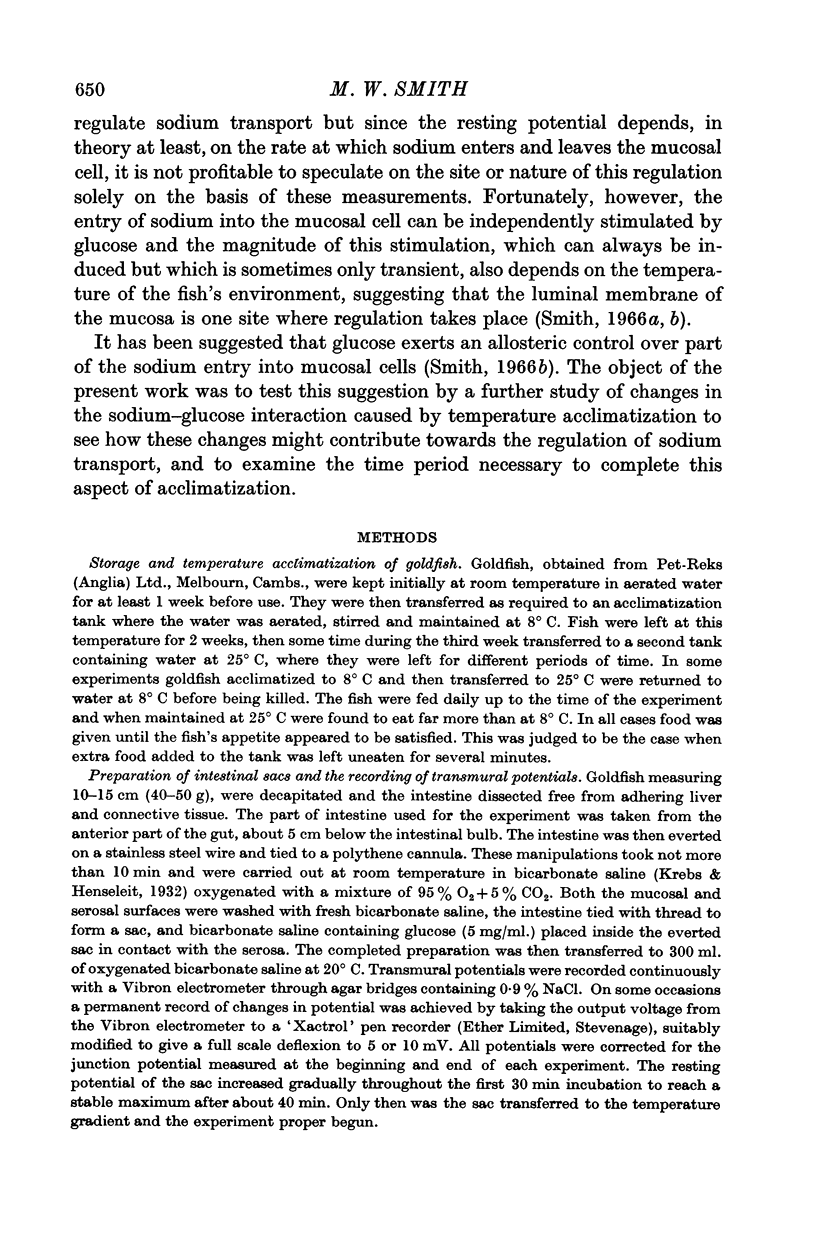
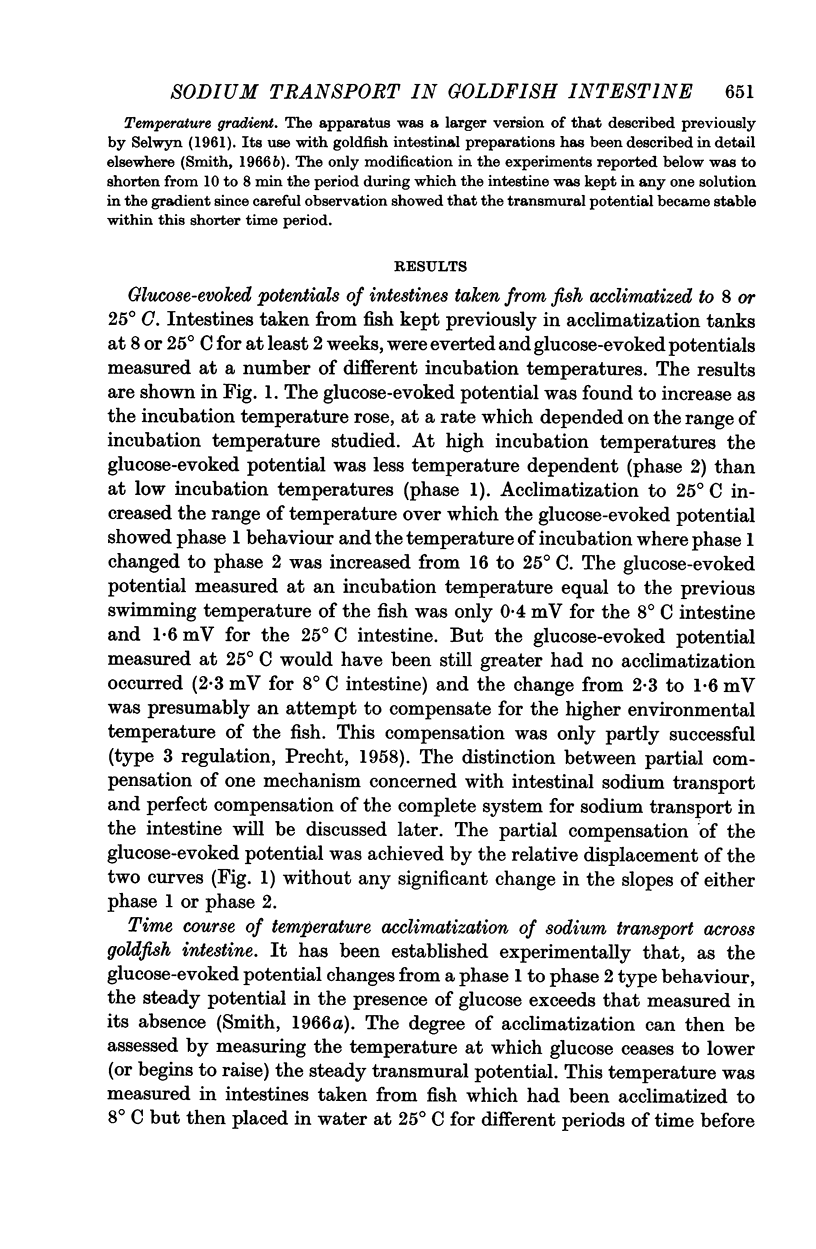
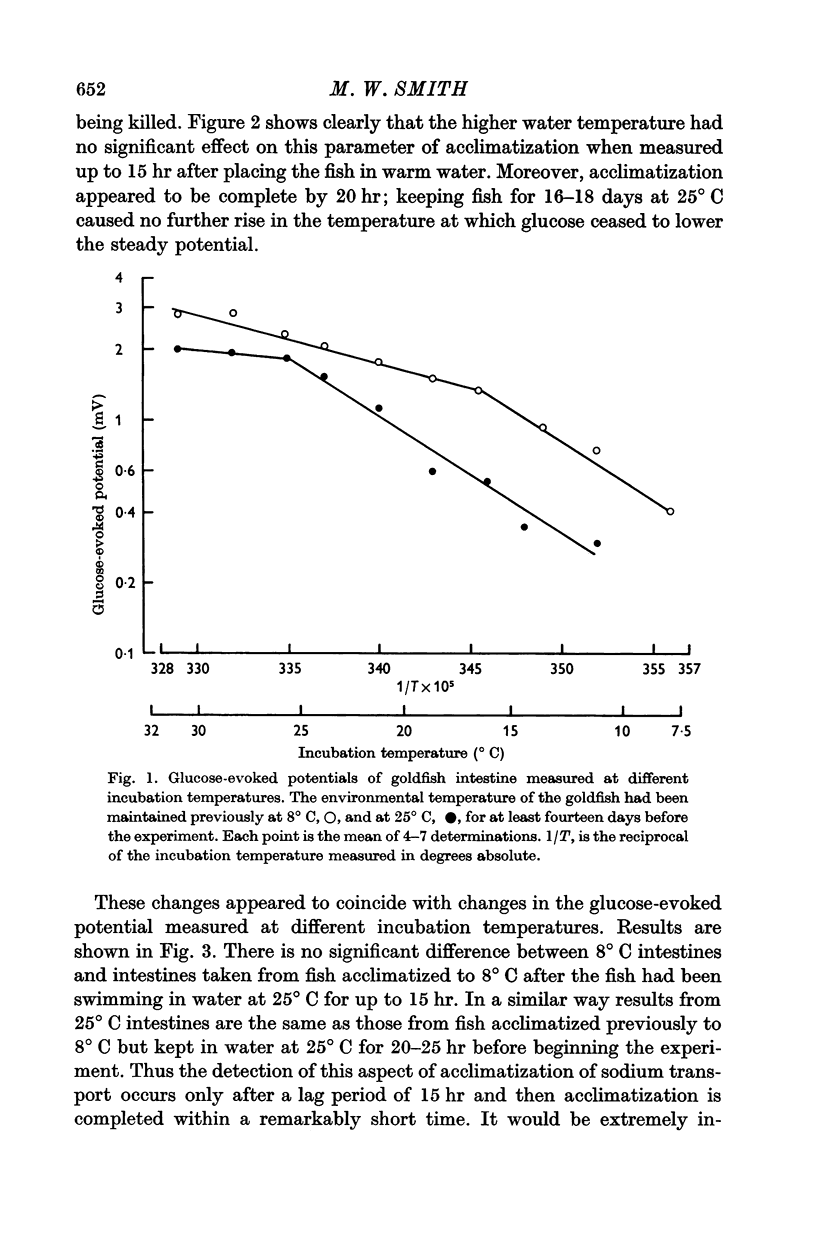
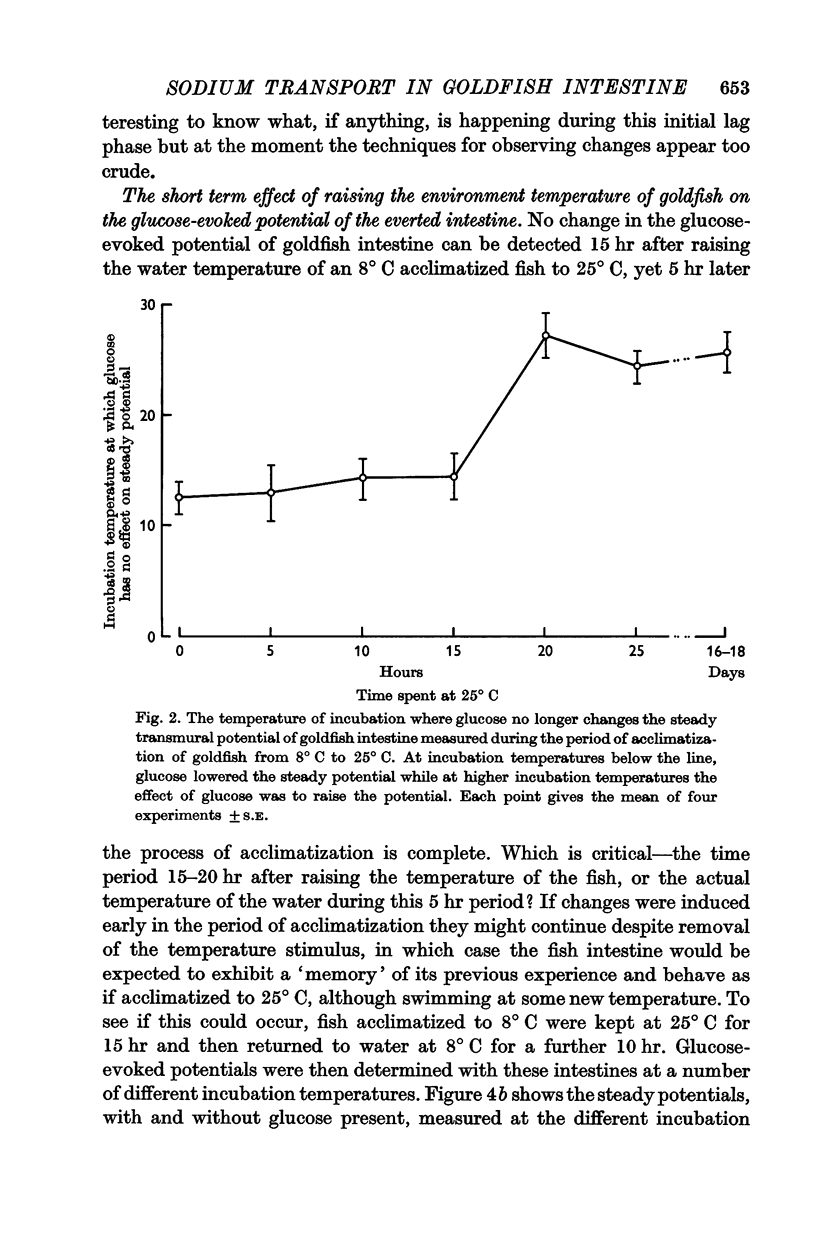
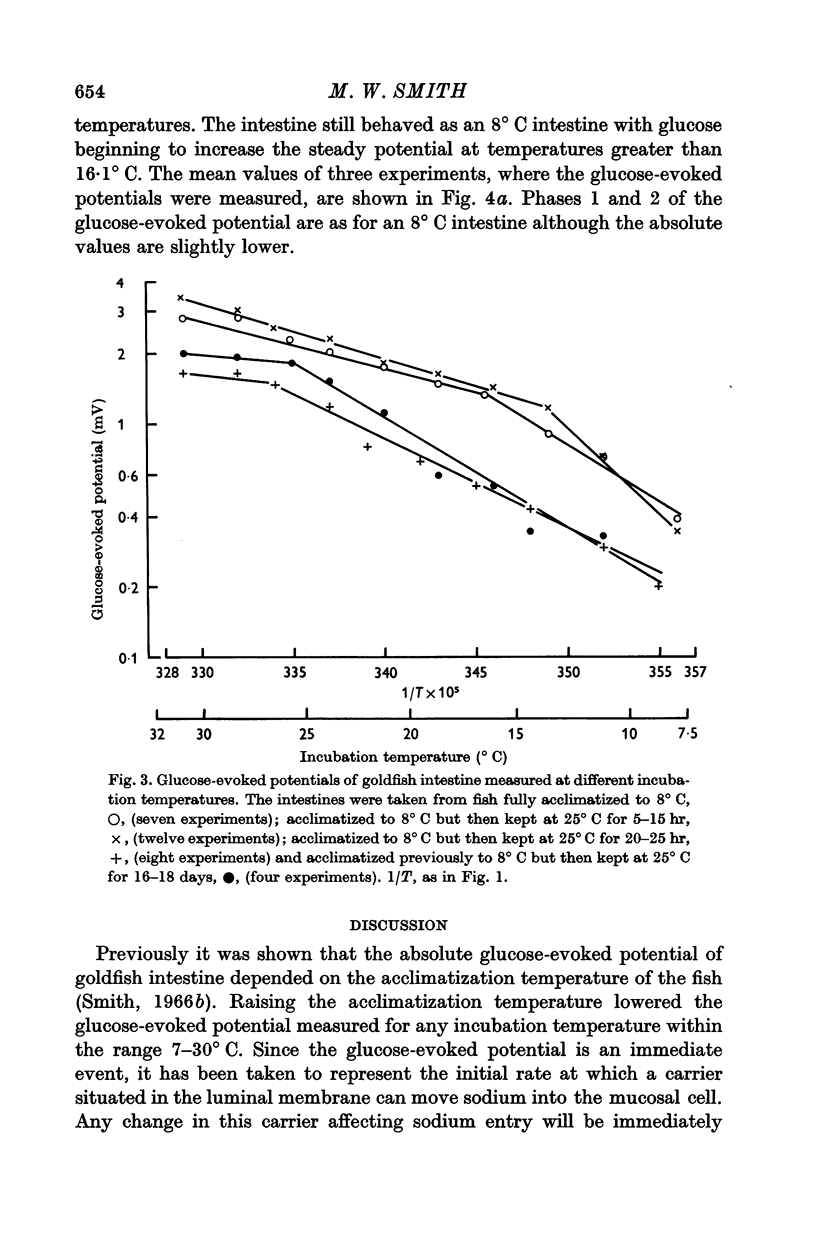
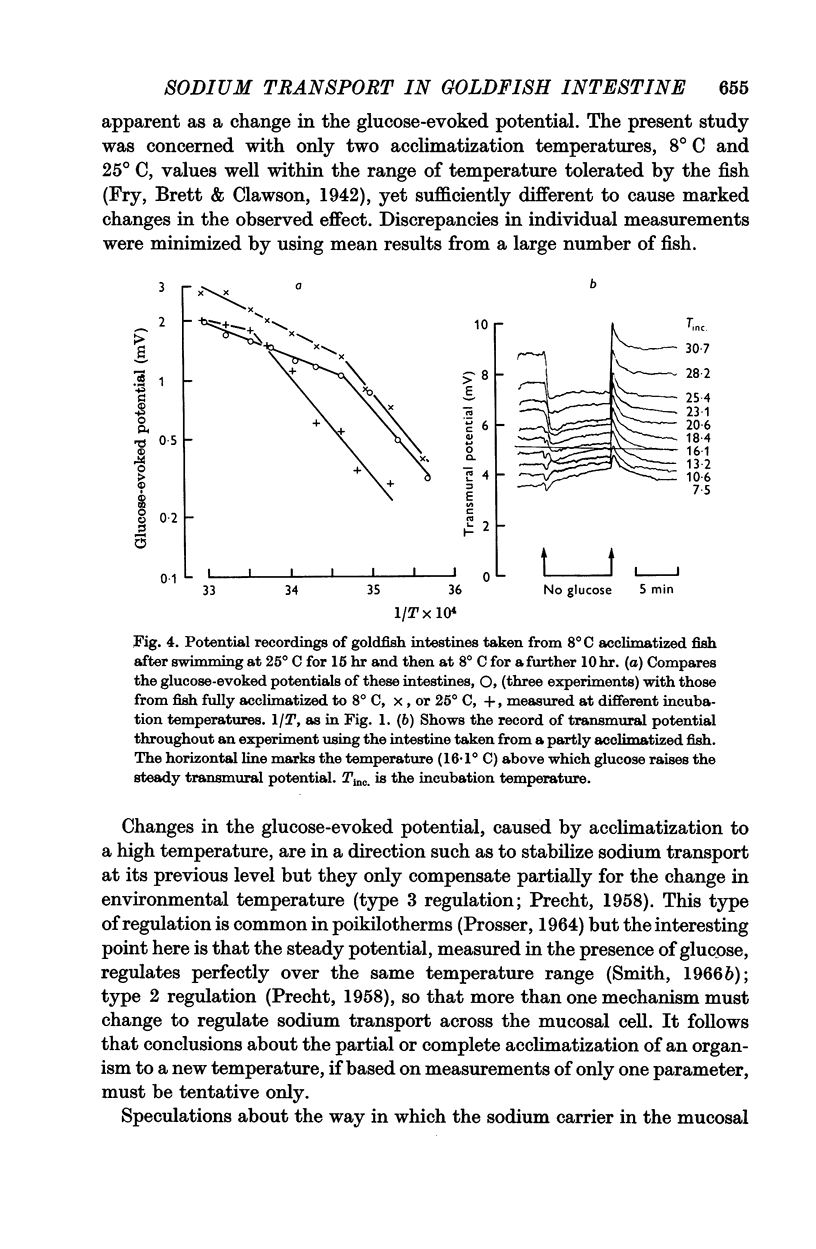
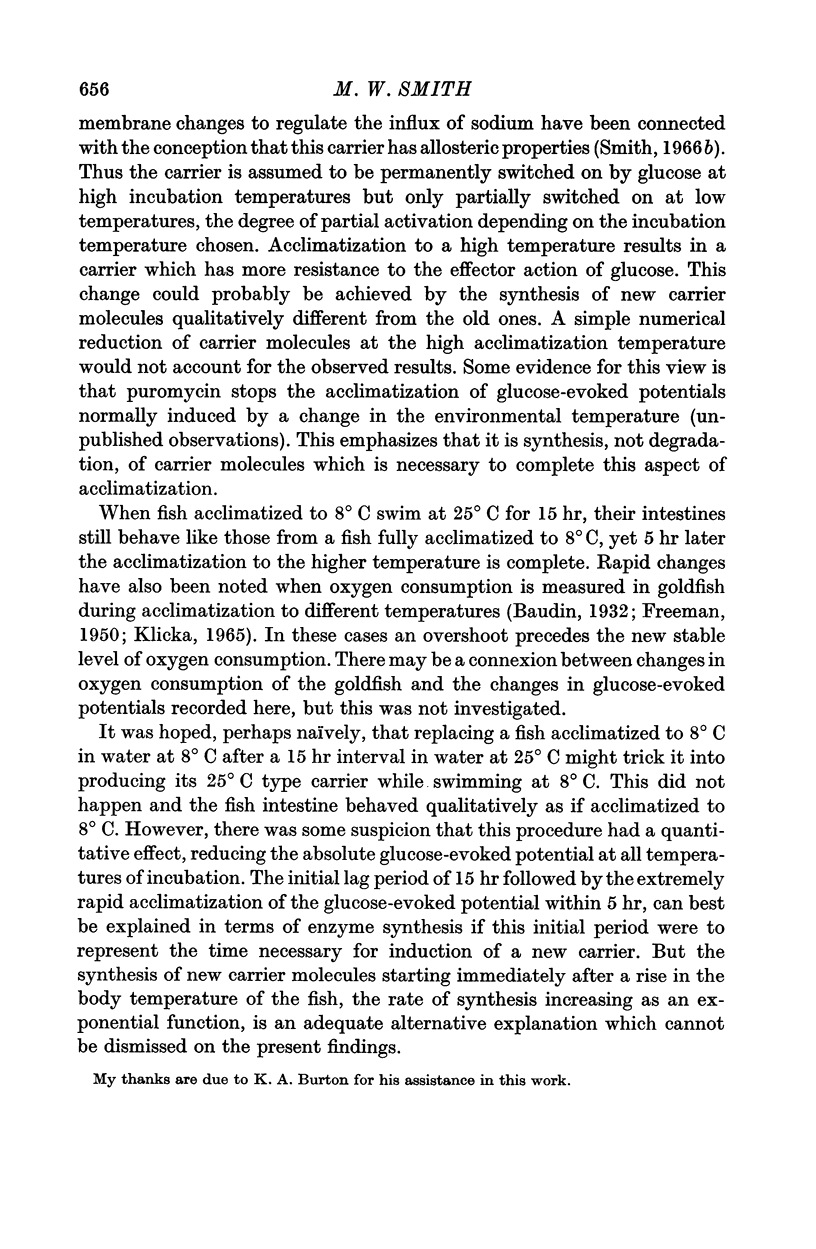
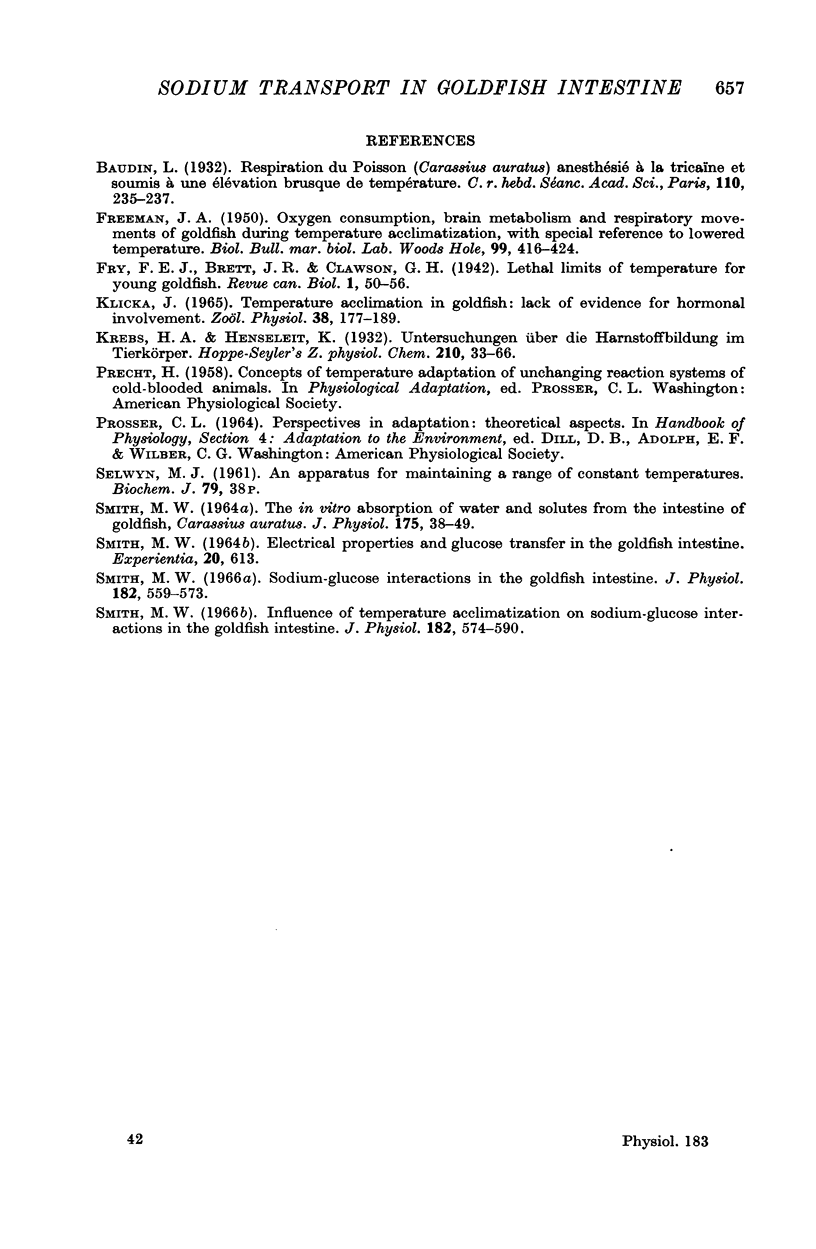
Selected References
These references are in PubMed. This may not be the complete list of references from this article.
- FREEMAN J. A. Oxygen consumption, brain metabolism and respiratory movements of goldfish during temperature acclimatization, with special reference to lowered temperatures. Biol Bull. 1950 Dec;99(3):416–424. doi: 10.2307/1538472. [DOI] [PubMed] [Google Scholar]
- SMITH M. W. THE IN VITRO ABSORPTION OF WATER AND SOLUTES FROM THE INTESTINE OF GOLDFISH, CARASSIUS AURATUS. J Physiol. 1964 Dec;175:38–49. doi: 10.1113/jphysiol.1964.sp007502. [DOI] [PMC free article] [PubMed] [Google Scholar]
- Smith M. W. Electrical properties and glucose transfer in the goldfish intestine. Experientia. 1964 Nov 15;20(11):613–614. doi: 10.1007/BF02144815. [DOI] [PubMed] [Google Scholar]
- Smith M. W. Influence of temperature acclimatization on sodium--glucose interactions in the goldfish intestine. J Physiol. 1966 Feb;182(3):574–590. doi: 10.1113/jphysiol.1966.sp007838. [DOI] [PMC free article] [PubMed] [Google Scholar]
- Smith M. W. Sodium-glucose interactions in the goldfish intestine. J Physiol. 1966 Feb;182(3):559–573. doi: 10.1113/jphysiol.1966.sp007837. [DOI] [PMC free article] [PubMed] [Google Scholar]


